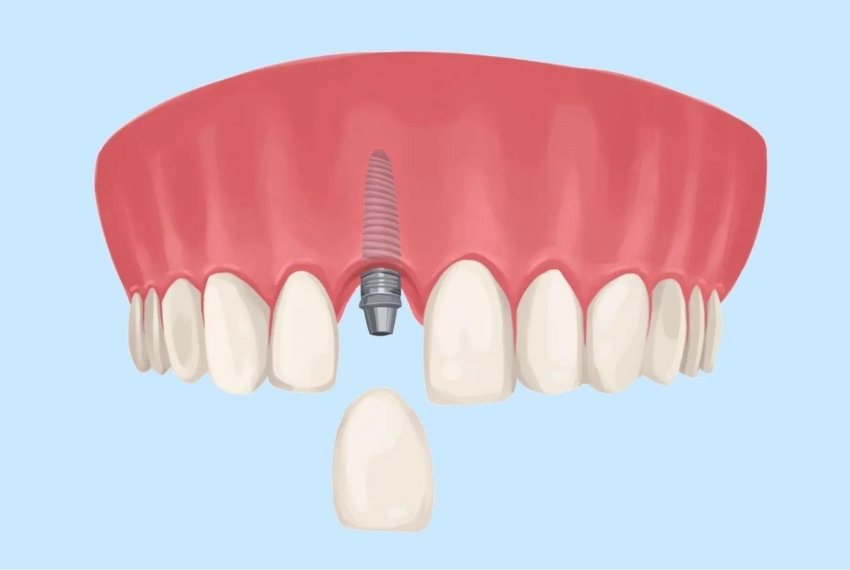
Front Tooth Implant
Implantation of Front Teeth
There have always been treatments that require labor-intensive and precise work by the dentist. When removing one of the front teeth from the dental arch, it is crucial to correct the missing upper or lower tooth with implant treatment as soon as possible. This is because front teeth, in addition to speech and eating functions, also contribute to the aesthetic appearance. The gap in the tooth, located in the center of the face, can make a person lose confidence and avoid communication, thus reducing the quality of life.
Causes of Front Tooth Loss
The loss of front teeth is not uncommon among people. Since they are the teeth located in the most external part of the mouth, incisors are often damaged due to accidents and injuries. Breaks and injuries to the front teeth are quite common, especially in young people, as a result of sports injuries.
Furthermore, since incisors are structurally small, cavities progress more rapidly. Decay starting in the front teeth can, over time, lead to a significant filling or even tooth loss as a result of root canal treatment. As a consequence of unsuccessful root canal treatments and root-end resections, gum recession, loosening, and loss of teeth in the front teeth can occur.
Aesthetic Success in Upper Front Tooth Implantation
When one of the incisors is extracted, a certain degree of bone resorption occurs in the extraction area during the healing process. To prevent this bone deterioration, the implant must be placed as soon as possible. Since implants transfer their chewing force directly to the bone, the resulting pressure and tension strengthen the bone.
To achieve optimal aesthetic appearance, especially in applications for implanting upper front teeth, factors related to the patient must be thoroughly assessed.
Smile Line
In cases of missing front teeth, gum recession is quite common, as the pressure created by the natural tooth on the gum tissue is lost. This situation does not create aesthetic problems for patients whose gums are not visible when smiling. However, for patients where the contact point between the teeth and the gums is not covered by the lips while smiling, the transition between the implant and the crown mounted on it should not be cosmetically noticeable.
Crown thickness around the Implant
The aesthetics of front teeth achieved through implant treatment are better in patients with genetically thicker gums. In patients with thin gums, the titanium support may shine through the crown, creating a dark metallic appearance. Choosing metal-free zirconium implants or supports in such individuals helps prevent such aesthetic issues. Additionally, the level of aesthetic success is lower in surgical interventions for implanting front teeth performed with flapless surgery, without making an incision in the gums.
Movement of the crown in proximity to the gap in the Front Area
When a tooth is extracted, it also leads to the recession of the gums over the parts of the adjacent teeth facing the gap. This does not create many problems when implanting the front two or four teeth. However, in cases where one tooth is missing, attention must be paid to the integrity of the gum line during implant placement.
Thin Implants for Lower Front Teeth
In cases of tooth loss in the front part of the lower jaw, the space between the two teeth is usually quite narrow, and it may not always be possible to place an implant with a standard diameter (3.3mm – 4.5mm) without damaging the adjacent teeth. In such cases, two-component, thin, or single-component implants with a narrower diameter (2.7 mm-3 mm) may be preferred. Thin implants help increase the duration of treatment by providing better nourishment to the bone around the screw.
Mini implants, which are considerably shorter in length, are not preferred for front teeth because they are not resistant to the inclined forces that occur during chewing.
How are Front Teeth Implants placed?
Before the treatment, patients undergo a comprehensive dental examination. Panoramic X-rays are used to check if the bone structures are suitable for the application. After verifying the suitability of adjacent teeth for implantation, the treatment is initiated with the patient's consent. Installing the implant screw takes approximately 30-60 minutes. At the end of the procedure, which is performed under mild sedation, patients usually report feeling calm and apprehension-free. Following this, the implant area is left to heal. The healing process takes an average of 3-6 months, depending on various factors such as bone structure, patient age, and gender. Afterward, the dental prosthesis is placed on the implant. For front teeth implants, veneers can also be applied for an overall aesthetic appearance.
Prices for Front Teeth Implants
Since there is no difference between the screws used in the front and back of the mouth, the prices for dental implants are usually the same. However, in the front teeth, bone augmentation and gum grafting are often necessary for aesthetic reasons. Additionally, the choice of more aesthetic ceramic abutments instead of the metal abutment to which the tooth is attached to the implant, and the type of the restoration that will be used, can alter the overall cost of the treatment.







